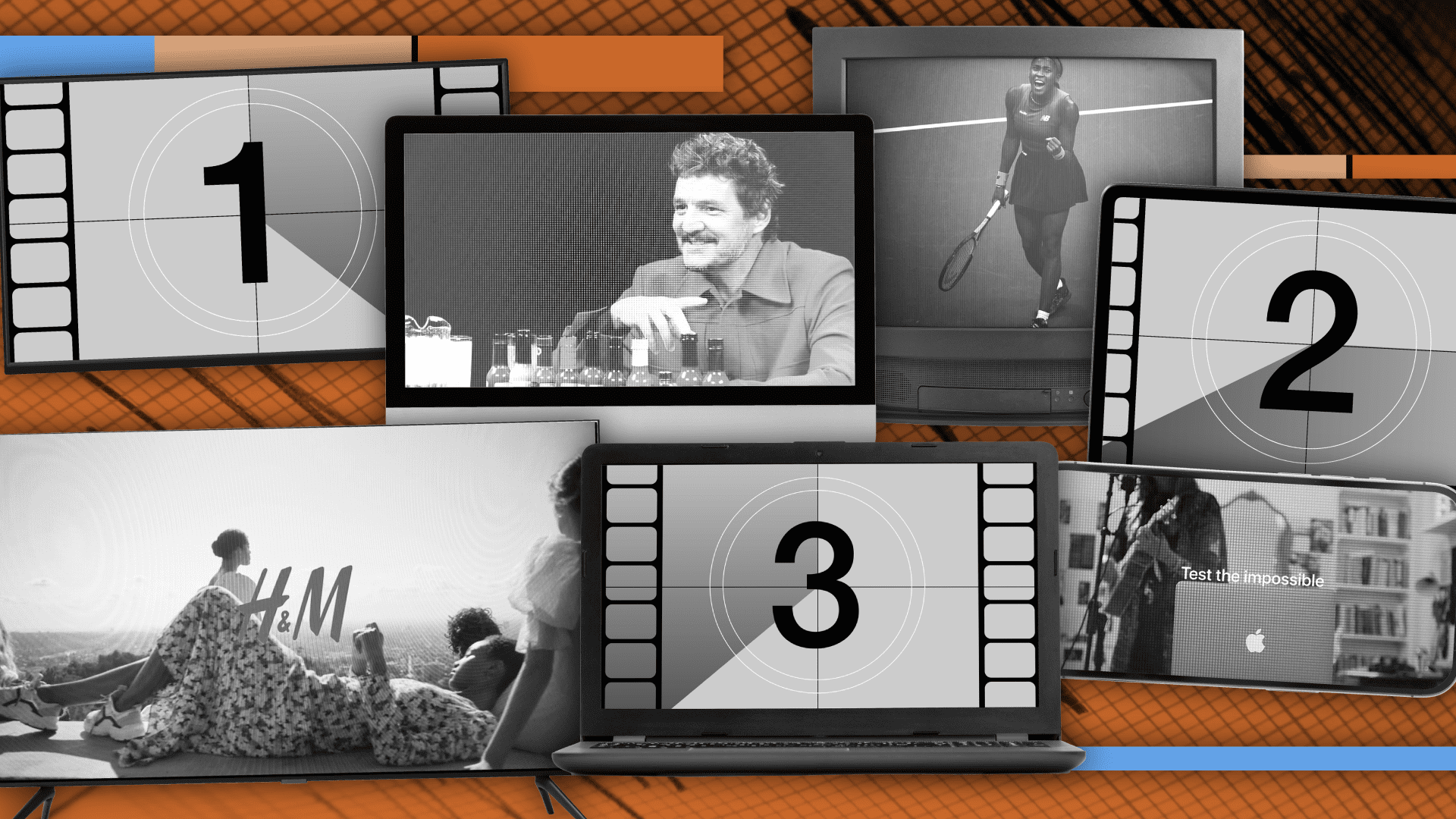Create A Video Marketing Strategy That Moves the Needle


Go on, try scrolling Instagram or Facebook for thirty seconds without coming across a video. Unless your algorithm stopped working in 2010, you’re unlikely to make it very far without encountering loads of videos from your favorite brands.
Video marketing strategy has become integral to branding across virtually all platforms (except Threads…for now). But that doesn’t mean it always works, especially considering that 90% of YouTube videos get less than 1,000 views.
Which begs the question: what does an effective video strategy look like? How do you create content that actually goes viral, engages your audience, and propels your core ROI metrics in the right direction?
Here’s how to create a powerful video marketing strategy that grabs your brand’s attention and moves the needle.
Before You Storyboard: Know Your Target Audience
There’s a reason it’s so easy to scroll mindlessly for hours if you don’t stop yourself. Sure, the proprietary algorithms studying your eye movements and video interactions help.
But the real reason your feed is filled with addicting video content is that brands know there is nothing more effective than video tailored to your interests to grab and hold your attention.
The takeaway: to create a video strategy that truly resonates with your target audience, you need to start with a deep understanding of who they are and what motivates them.
Developing detailed buyer personas helps you visualize and empathize with your ideal customers, enabling you to tailor your videos to meet their specific needs.
Take time to do your research on your intended audience, and you’ll increase the likelihood that you can actually generate a buzz.
Here are some tips for getting into the minds of your target audience before you sit down to strategize your video content.
Create Buyer Personas
A buyer persona is a semi-fictional representation of your target customer based on market research, data analysis, and customer insights. It includes demographic information, behavioral patterns, goals, challenges, and motivations.
Consider conducting surveys, interviews, or analyzing your existing customer data to build effective buyer personas.
Identify Pain Points and Aspirations
Once you have your buyer personas in place, move on to their pain points and aspirations. What challenges do they face, and how can your product or services address those pain points?
Use this information to create videos that resonate emotionally with your audience and inspire action.
Brainstorm A Few Compelling Buyer Stories
People connect with stories on a deep and emotional level. Use the insights from your buyer personas to craft narratives that speak directly to their experiences and aspirations.
Whether it’s a customer success story, a behind-the-scenes look at your brand, or an inspirational message, your story should align with your brand’s mission and values.
How To Create A Powerful Video Marketing Strategy
The foundation of any successful marketing strategy begins with clear and well-defined goals. Video marketing is no exception.
Take the time to outline your video’s objectives and determine what you want to achieve with each video before diving into the creative process.
Step 1 – Pinpoint Where Viewers Are In The Sales Funnel
In addition to knowing details like your audience’s demographics and pain points, you’ll need to know where they fall in the sales funnel.
The marketing or sales funnel represents the journey a potential customer goes through before making a purchase decision. It comprises three main stages: Awareness, Consideration, and Decision.
- Awareness Stage: Your goal is to attract and engage a broad audience that might be unaware of your brand or its offerings. Captivating and educational videos are best to introduce your brand’s unique value proposition and leave a memorable impression.
- Consideration Stage: In the consideration stage, your audience actively researches and compares different solutions to their problems. Your social videos should be informative, highlighting the benefits of your products or services and addressing common questions or concerns.
- Decision Stage: Your goal is to provide social proof and reinforce the superiority of your brand over competitors. Video testimonials, product demos, and case studies are effective at this stage.
Step 2 – Outline Your Video’s Key Message
Once you’ve determined your target audience and the funnel stage you want to address, outline the core message you want your social videos to convey. Clarity and conciseness are essential whether it’s showcasing a new product, announcing a promotion, or telling your brand’s story.
Step 3 – Define Your Metrics for Success
What’s your goal for the online video? Do you want engagement? Clicks? Sign-ups? Set specific metrics that align with your goals.
For instance, this video marketing strategy survey suggests:
- 63% of video marketers consider the number of video views as a primary metric for assessing the reach and engagement of their video content.
- 61% of video marketers use audience engagement metrics, such as shares, likes, and comments, to gauge how effectively their videos resonate with viewers.
- 56% of video marketers measure the ROI on their video content based on leads and clicks generated from video marketing campaigns, focusing on conversion rates.
Whatever you choose, regularly track and analyze these metrics to gain valuable insights and refine your approach.
Step 4 – Choose The Right Video Style
With a clear understanding of your audience and goals, it’s time to select the video types and styles that best suit your brand and message. Each type of video serves a specific purpose in the marketing funnel, and the style of your online videos should align with your goals.
Explainer Videos
Explainer videos, chosen by 70% of marketers, have proven to be highly effective in simplifying complex concepts, products, or services, making them more accessible to viewers.
They succinctly explain a product, service, or concept, addressing your audience’s pain points and showcasing your unique value proposition. They’re perfect for the awareness and consideration stages of the marketing funnel as long as you keep them engaging and visually appealing to maintain interest.
Customer Testimonial Videos
Testimonial videos are produced by 46% of marketers, leveraging the influence of satisfied customers to build trust and credibility around their brands.
In these videos, satisfied customers share their experiences and positive outcomes after using your products or services. Use authentic and relatable customer testimonials to boost confidence in your brand.
Brand Story Videos
Brand story videos are essential for creating an emotional connection with your audience. These videos delve into your brand’s history, values, and mission, helping customers understand the driving force behind your business.
These include product videos that tell the story of a customer’s before and after experience or behind-the-scenes videos. Make sure to evoke emotions that align with your brand’s personality.
Step 5 – Produce Engaging Video Content
Next, it’s time to focus on the creative aspects that will make your videos stand out and capture your audience’s attention.
- Plan your production – Before you start filming, create a detailed production plan that outlines the key elements of your video, such as the script, visuals, music, and talent.
- Optimize for mobile viewing – Given the prevalence of mobile devices, you should keep videos short, use captions with relevant keywords or text overlays, and ensure that the visuals are compelling, even on small screens.
- Incorporate branding elements – Maintain consistency across your videos by incorporating branding elements like logos, colors, and taglines.
Step 6: Leveraging Video Across Social Media Platforms
Each social channel has its unique audience and engagement rates, so tailoring your videos to suit these differences is essential.
Here are a few key stats from a 2023 video marketing study to keep in mind as you make your plan:
- YouTube reigns as the top video marketing platform, with 90% of video marketers trusting this giant.
- Following closely are Facebook (86%), Instagram (79%), and LinkedIn (also 79%), making these social media platforms essential components of video marketing strategies.
- Niche platforms like 3D Video/Augmented Reality (used by 15% of marketers), Virtual Reality (13%), and 360 Video (17%) show low adoption rates.
- Snapchat, once considered a promising video marketing tool, is only used by 13% of brands. Despite its social media phenomenon status, TikTok is utilized by 35% of marketers, indicating room for further growth.
- Additionally, Twitter is underutilized as a video marketing tool, with only 54% of marketers employing it.
In terms of effectiveness, certain platforms stand out among video marketers: YouTube, with an effectiveness rating of 78% among video marketers, leads the pack. LinkedIn (69%) and Instagram (67%) also boast high effectiveness ratings.
Customizing for different platforms
Avoid a one-size-fits-all approach when sharing different types of videos on different platforms. Each platform has its video specifications, audience preferences, and content formats.
For example, short and snappy product videos perform well on social platforms, while longer-form content may be better suited for your website or YouTube channel. Consider adding platform-specific captions, tags, and descriptions to optimize discoverability.
Engaging with your audience
Video marketing isn’t just about broadcasting your message; it’s also about engaging with your audience. Encourage viewers to interact with your educational videos by asking questions, running polls, or requesting feedback in the comments section.
A/B testing your videos
Experimentation is key to refining your video marketing strategy. Conduct A/B tests to compare different versions of your videos and analyze which ones resonate better with your audience. Test elements such as video length, storytelling approach, call-to-action, and visuals to discover the most effective combination for your brand.
Harnessing the power of influencers
Collaborating with influencers or industry experts can significantly amplify the reach and impact of your video content. Influencers have established credibility and a dedicated following, making them ideal partners to promote your brand. Choose influencers whose values align with your brand to ensure authenticity and maximize the impact of the partnership.
Step 7 – Measure the Return on Investment (ROI)
While some metrics, such as views and engagement, provide valuable insights, it’s also crucial to tie video performance to tangible business outcomes. Use analytics tools to track user behavior from the moment they first engage with different types of videos to the point of conversion.
The Power of a Trusted Video Production Partner
While video marketing offers immense potential, creating high-quality and effective videos can be a complex and time-consuming process. That’s where a dedicated video production partner like Hey can make all the difference.
From concept to production and promotion, Hey provides the expertise, creativity, and support necessary to create compelling videos that move the needle and elevate your brand’s presence in the digital realm.
Start a conversation today and watch as your brand’s story comes to life in ways that captivate, engage, and inspire your audience.


Comments are closed.